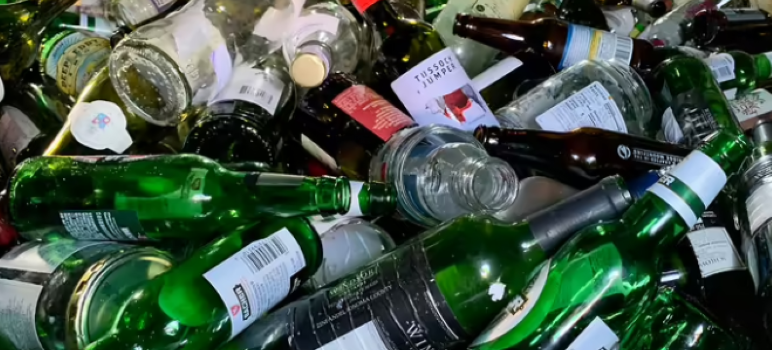Gov. Gavin Newsom has signed off on changes to California's bottle recycling law in a bid to bolster the state's beverage container recycling program, reducing the amount of plastic and glass going into landfills and helping to stabilize the recycling market.
Senate Bill 353, introduced by Sen. Bill Dodd, D-Napa, will add containers of 100 percent fruit juice and vegetable juice to the state's bottle recycling law, putting another 200 million containers per year into the recycling stream, Dodd's office said in a news release Saturday.
It would also invest new ongoing funding to support rural recycling options for consumers to redeem their deposit and improve recycling rates.
The bill also authorizes the Department of Resources Recycling and Recovery to adjust its processing of payment calculations for recyclers to a quarterly schedule rather than yearly, helping to stabilize the market.
Lastly, the bill improves transparency on recycling metrics and allows the department to make critical efficiency improvements.
“This is a big step toward cutting our state's waste stream while uplifting our recycling program,” Sen. Dodd said in a statement. “This new law reduces the amount of recyclables we put into landfills, provides a financial lifeline to recyclers, and maximizes consumers' options for redeeming deposits on beverage containers. Ultimately, it will help us meet our recycling goals. I thank the governor for his support.”
The California Beverage Container Recycling and Litter Reduction Act, established in 1986, encourages consumers to recycle beverage containers by requiring them to pay a deposit for eligible bottles.
Over the years, the program has been expanded to include soda, beer and wine bottles. However, it does not include larger or vegetable juice containers. According to Dodd's office, the program has been plagued with volatile annual scrap valuations that threaten many recyclers in rural, underserved communities.
“This measure will increase consumer opportunities to recycle and get cash back on empty containers, by making common sense updates to the CRV program,” said Mark Murray, executive director of Californians Against Waste. ‘ll juice beverages, regardless of container size, will now have a refund, and recycling payments for new and existing recycling centers will be stabilized against scrap market fluctuations.”
SB 353 follows the Legislature's passage of a bill authored last year by Senate President pro tempore Toni Atkins and Sen. Dodd to add wine and spirits containers to the program and make significant investments in recycling. SB 353, won overwhelming legislative support before being signed by the governor, Dodd's office said.
“As the stewardship organization for plastic containers in California's Bottle bill, we commend the senator expanding the bottle bill to include all juice bottles and to make the system more responsive to market forces,” said Sally Houghton, executive director of Plastic Recycling Corporation of California. “This will help get more containers recycled and turned back into bottles in a cost-effective manner.”


The Venerable Synod of NPR confirmed it,,, Recycling is a Scam. A Big Oil Scam as per the usual.
Why do you people keep hitting your head against the wall and complaining it hurts.
They’ve been doing this over 25 years and still can’t get it right.
Adding more items to pay into the fund, but it’s so difficult to get your money back for the items. Try to find places to take your smelly cans and bottles to get your deposit back. Not easy to do, and the few places you can find, when they are open, you’ll be waiting in line.
The state should be required to make it as easy to get our money back as it is for them to take it. Back in the ‘old’ days, you took bottles right back to the store to get your deposit. Now you’ve got to find a trailer in a parking lot, or go to a metal recycler.
I wonder what happens to the millions of dollars for items that are never redeemed? Anyone know what the balance is of CRV collections after 25 years, or if the state dips into those funds?
I’m sure the money finds its way to legislators’ pet projects. The CRV is simply another tax.